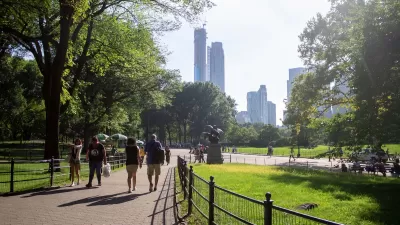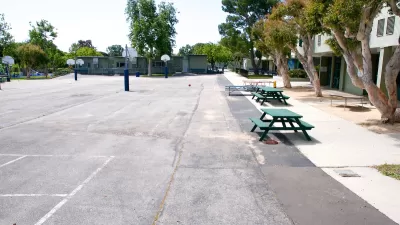How trauma-informed urbanism can make cities and their residents healthier and more resilient.

An opinion piece by Nicholas Lalla in Fast Company reveals the high social and economic costs of traumatic disasters, highlighting how cities can boost their resiliency and prepare for disaster recovery.
“A city that isn’t resilient enough to withstand the aftermath of a disaster, manmade or natural, isn’t one that can serve for long as a viable center of commerce, culture, and society,” Lalla writes. “Research published in The Journal of Clinical Psychiatry found that in 2018, post-traumatic stress disorder cost the U.S. economy over $230 billion, while research from the University of Pennsylvania found that childhood trauma alone cost society over $450 billion each year.”
In Lalla’s view, “Above and beyond strong infrastructure, such as levees that protect my hometown of New Orleans against hurricanes, cities need to better anticipate, mitigate, and heal from trauma itself.” Lalla describes an emergent field known as trauma-informed urban development, an approach that focuses on “resilience, community cohesion, and aid in recovery.” The approach includes strategies such as consulting with mental health professionals, connecting people with nature and green spaces that can help improve mental health and air quality, supporting vibrant, mixed-use developments, and providing economic opportunities to help residents recover after disasters.
Many of the goals of the trauma-informed urban development movement dovetail with the goals of other urbanists: walkability, better public transit, green spaces, and economic opportunity, all qualities that help cities “stand a good chance of being resilient to trauma.”
FULL STORY: How we build cities can help us overcome traumatic events

Study: Maui’s Plan to Convert Vacation Rentals to Long-Term Housing Could Cause Nearly $1 Billion Economic Loss
The plan would reduce visitor accommodation by 25,% resulting in 1,900 jobs lost.

North Texas Transit Leaders Tout Benefits of TOD for Growing Region
At a summit focused on transit-oriented development, policymakers discussed how North Texas’ expanded light rail system can serve as a tool for economic growth.

Using Old Oil and Gas Wells for Green Energy Storage
Penn State researchers have found that repurposing abandoned oil and gas wells for geothermal-assisted compressed-air energy storage can boost efficiency, reduce environmental risks, and support clean energy and job transitions.

Private Donations Propel Early Restoration of Palisades Playground
Los Angeles has secured over $1.3 million in private funding to restore the Pacific Palisades playground months ahead of schedule, creating a modern, accessible space that supports community healing after recent wildfires.

From Blight to Benefit: Early Results From California’s Equitable Cleanup Program
The Equitable Community Revitalization Grant (ECRG) program is reshaping brownfield redevelopment by prioritizing projects in low-income and environmental justice communities, emphasizing equity, transparency, and community benefits.

Planting Relief: Tackling Las Vegas Heat One Tree at a Time
Nevada Plants, a Las Vegas-based nonprofit, is combating the city’s extreme urban heat by giving away trees to residents in underserved neighborhoods, promoting shade, sustainability, and community health.
Urban Design for Planners 1: Software Tools
This six-course series explores essential urban design concepts using open source software and equips planners with the tools they need to participate fully in the urban design process.
Planning for Universal Design
Learn the tools for implementing Universal Design in planning regulations.
Ascent Environmental
Borough of Carlisle
Institute for Housing and Urban Development Studies (IHS)
City of Grandview
Harvard GSD Executive Education
Toledo-Lucas County Plan Commissions
Salt Lake City
NYU Wagner Graduate School of Public Service





























